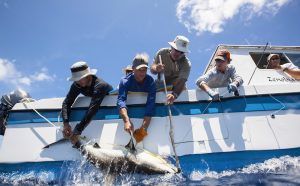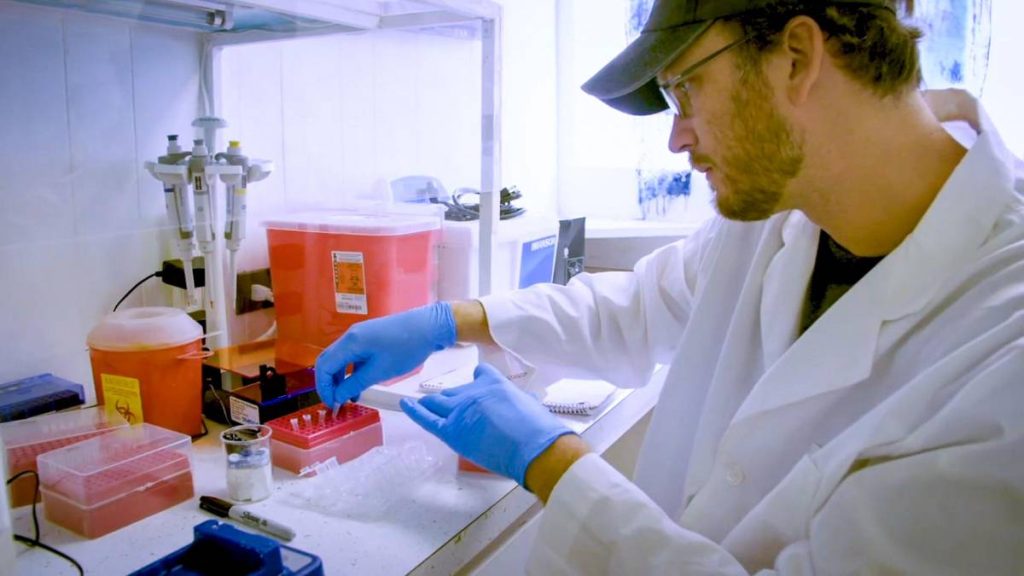Shark Study Results Surprise Researchers
An eight-year shark study conducted 1,000 miles south of Hawai‘i has established the baseline for what is considered a healthy shark population, and its smaller than previously thought.
The large-scale research project, led by The Nature Conservancy and the University of California at Santa Barbara, was conducted at Palmyra Atoll, an isolated national wildlife refuge.
Some 1,300 reef sharks were tagged by researchers at Palmyra between 2006 and 2014 to estimate their population size. Of that number, 350 sharks were recaptured making it the largest reef shark tag recapture program in the world.
As a result, researchers now have a better understanding of what a healthy shark population looks like in the wild. The data also helps them understand the relationship between healthy shark populations and healthy coral reefs, of which little is known.

Scientists aboard a research boat implant a tracking transmitter on a grey reef shark at Palmyra Atoll. Photo courtesy of Tim Calver/Nature Conservancy.
The lead author of the study, Dr. Darcy Bradley, reported that an estimated 6,000 to 8,000 gray reef sharks inhabit the remote atoll, which are far fewer numbers than initially expected.
Even so, the density of sharks at Palmyra is an astonishing sight, especially when compared to the main Hawaiian Islands.
“When you dive in the nearshore waters around Hawai‘i, it’s very rare to see a shark,” said Dr. Eric Conklin, director of marine science for The Nature Conservancy’s Hawai‘i and Palmyra programs. “In Palmyra, it’s very rare not to see several.”
Worldwide shark numbers are in sharp decline and for some species, population losses are as high as 90 percent, according to The Nature Conservancy Hawai‘i.
The results of this latest study may help restore shark populations in island states and territories where coral reef ecosystems depend on them to maintain a healthy equilibrium.
The results of the study can be viewed online in the journal Scientific Reports.















